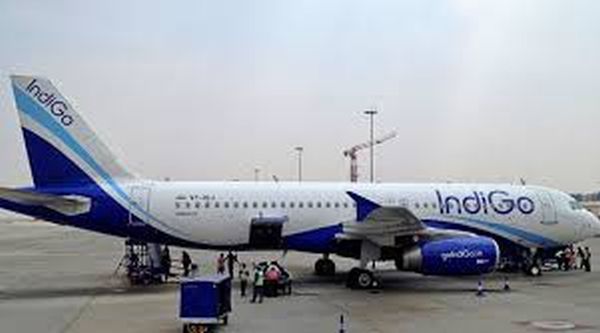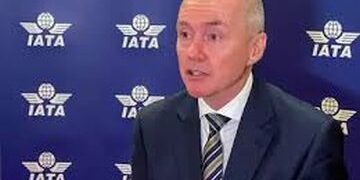Mumbai: Finance Minister Nirmala Sitharaman on Thursday said the country needs big and world-class banks, and discussions are on with the Reserve Bank and lenders in this regard.
Addressing the 12th SBI Banking and Economics Conclave 2025, Sitharaman asked lenders to deepen and widen credit flow to the industry, exuding confidence that GST rate cut-driven demand would unleash a virtuous investment cycle.
She advised that access to finance is absolutely critical and that a system-driven, transparent lending process is essential.
Stressing that India needs a lot of big and world-class banks, she said the “government is looking at this and work has already commenced. We are discussing with the RBI. We are discussing with banks”.
Before the government takes a call on this, she said, a lot of the work has to be done, including taking inputs from the RBI as to how they want to build larger banks.
“It is not by creating from those which exist today…just by amalgamation that can also be one of the routes, but you need an ecosystem and an environment in which more banks can operate and operate to grow. So, that environment is actually well established in India, but I needed to be more dynamic. So, some work is happening on it,” she said.
In a bid to create bigger banks, the government in the past had done two rounds of consolidation. In the biggest consolidation exercise in the banking space, the government, in August 2019, had announced four major mergers of public sector banks, bringing down their total number to 12 from 27 in 2017.
Effective April 1, 2020, United Bank of India and Oriental Bank of Commerce were merged with Punjab National Bank; Syndicate Bank was merged with Canara Bank; Allahabad Bank was amalgamated with Indian Bank; and Andhra Bank and Corporation Bank were consolidated with Union Bank of India.
In 2019, Dena Bank and Vijaya Bank were merged with Bank of Baroda. Prior to this, the government had merged five associate banks of SBI and Bharatiya Mahila Bank with the State Bank of India. This was done in April 2017 with the intent to make SBI much bigger.
Besides, as part of the privatisation exercise, the government in January 2019 sold its controlling 51 per cent stake in IDBI Bank to Life Insurance Corporation of India (LIC).
Subsequently, the government and LIC announced plans for the strategic sale of their stake in IDBI Bank.
In October 2022, both shareholders had invited EoI (Expression of Interest) from investors for privatising IDBI Bank by selling a total of 60.72 per cent stake. This includes a 30.48 per cent stake of the government and 30.24 per cent of LIC.
In January 2023, the Department of Investment and Public Asset Management (DIPAM) received multiple EoIs for IDBI Bank.
Paving the way for the sale of IDBI Bank, Sebi in August 2025 has approved the reclassification of Life Insurance Corporation as a public shareholder from promoter of the bank on completion of strategic divestment in the lender.
She emphasised that infrastructure creation is the government’s main focus, and capital expenditure has increased fivefold in the last decade.
Speaking about fiscal prudence, she said the government is maintaining a sustained self-reliance principle in making sure that the fiscal discipline is never threatened.
“Balancing growth spending with fiscal stability ensures macroeconomic resilience, keeps inflation in check, and preserves investor confidence,” she said.
Sitharaman also said the government’s goods and services tax reforms, which took effect on September 22, kick-started private capital expenditure, with companies seeing confidence in consumption demand.
“From September 22, you are seeing the consumption horizon glaring…So, there is demand. I am also seeing a good number of private sector capacity building, and equity credit is also going up. So, it is actually kick-starting, I would think, vicious virtuous cycle,” she said.
If the virtuous cycle of investment kicks in, it will actually speed up growth momentum, she added.
Talking about economic self-reliance or Arthik Atmanirbharta, she said it means a nation’s ability to generate its own prosperity through diversified production, internal value creation, and sustainable wealth.
“India is a vast and uniquely diverse nation – there is no single model before us to copy or replicate. Economic Atmanirbharta should be shaped by our own realities, needs, and aspirations.
“It will mean food security, energy security, giving full steam to MSMEs, textiles, and tourism. Economic Atmanirbharta means nurturing both traditional sectors and modern technology & innovation-based sectors,” the minister said.
Financial inclusion, a robust financial and banking ecosystem and fiscal prudence would be needed for achieving Economic Atmanirbharta, she pointed out.
‘Atmanirbhar Bharat’ envisions an India that designs, produces, and innovates for itself and for the world – an economy rooted in self-confidence, powered by enterprise, and guided by compassion, she said, adding that it is the coming together of economic strength, technological capability, social empowerment and environmental responsibility – all aligned with the larger goal of Viksit Bharat by 2047.
Speaking at the event, SBI Chairman CS Setty said that India’s largest lender will feature in the top 10 global banks by 2030.
SBI also touched USD 100 billion market capitalisation on Thursday, he said.
The country’s biggest lender had reported a net profit of Rs 20,160 crore for the September quarter, including an exceptional gain of Rs 4,593 crore from its 13.18 per cent stake sale in Yes Bank.
Talking about banking sector reforms, Setty said the government should look at raising the foreign direct investment limit in PSU banks to 49 per cent from the current 20 per cent.
The hike in FDI limit will help bring more parity between public and private sector banks. Private banks can have up to 74 per cent of their equity capital from foreign investors.
With a 51 per cent stake, the government can continue to retain the public sector entity identity of PSU banks. Foreign capital will also help in building larger and globally competitive lenders.





